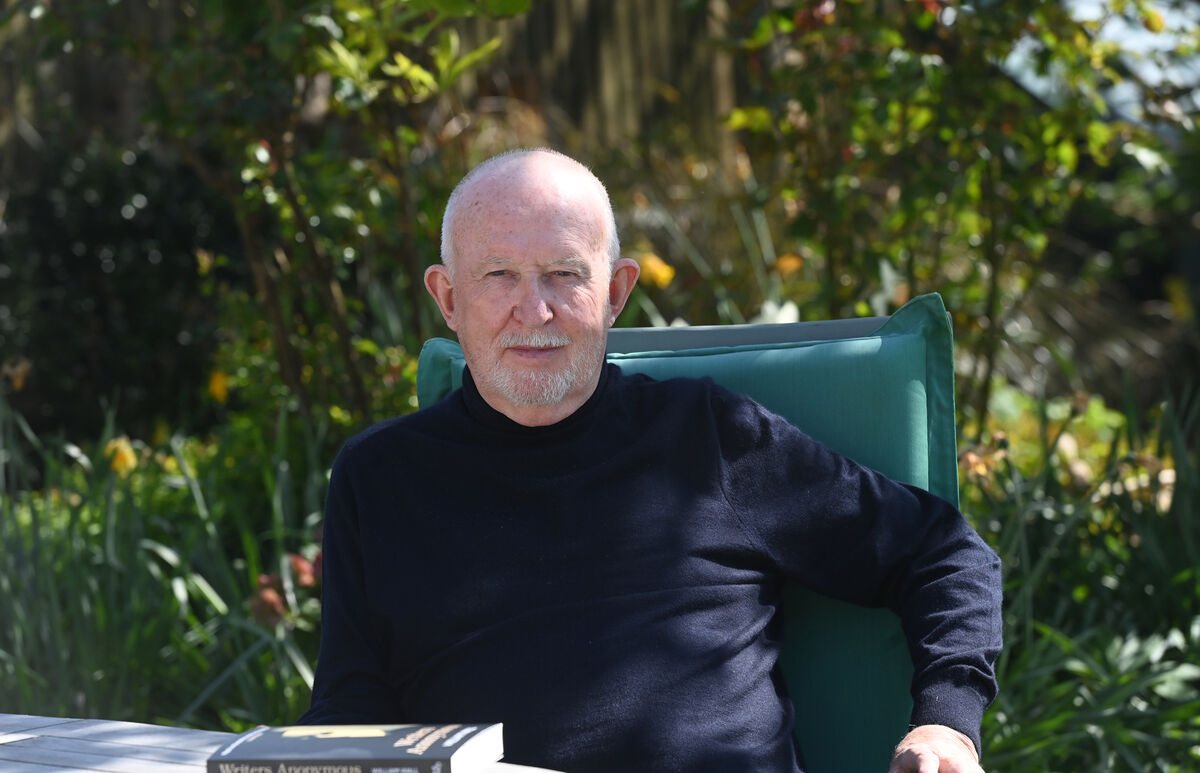William Wall: How a decades-old hip replacement turned me into a medical exhibit in Italy

William Wall: 'I joked that they wouldn’t be engaged in surgery but in archaeology and that my hip was an historical artefact.' Picture: Larry Cummins
My ancient artificial hip came apart as I was on my way to speak at a secondary school in the city of Genoa. It was, to say the least, painful. It wasn’t exactly new. In fact it was 42 years old, well past its sell-by date as defined by the surgeon who gave it to me back in the prehistory of 1982. "It should last 25 years," he said. So much for guarantees!
In Italy you can walk in (or hobble) and get an X-ray without a doctor’s letter and have it read on the spot and so I did. I got a taxi to the centre. When the radiologist saw it he went pale. "You shouldn’t be standing up, let alone walking," he said. "It’s OK," I replied, "I have a taxi waiting outside". That did nothing to calm him. "Go to the hospital immediately," he said.
I went home and phoned a friend. Maria Rosa was one of the first friends we made in Camogli. Former proprietor of a famous family restaurant where, among other stars, Umberto Eco used to eat, we couldn’t have a better or more capable advisor. She took one look at me and called an ambulance.
Fifteen minutes later I was on my way to San Martino, one of the biggest hospitals in Europe and a centre of excellence for orthopaedics. Before leaving I had phoned my GP in Ireland for advice.
Should I fly home? "No" was his advice. "Stay where you are. They’re used to skiing accidents, people falling off scooters, mad cyclists, car accidents. You couldn’t be in a better place." He didn’t say, perhaps not wishing to scare me, that flying brought the risk of thrombosis if your hip wasn’t properly connected to the rest of your body.

When I presented them with the x-ray at A&E, the doctor there was puzzled. She had never seen a hip of that shape before. Did I have the technical details?
I didn’t, but my son Oisín used to be a curator at the Science Museum in London and they had one there, I could ask him. I texted him and shortly afterwards he replied with the full spec. The doctor burst out laughing. "I’ve read about this in the history of medicine," she said, "but I never expected to see one in my practice!"
From then on I was Exhibit A. As they moved me first to Orthopaedic Emergencies and then to Complex Orthopaedic Injuries I became the centre of attention for every junior doctor and registrar in the place. I had my history taken by, perhaps, ten different people.
Since nobody spoke English I developed a detailed Italian vocabulary on orthopaedics and medical procedures. I got to the point where I could recite my story by heart so that when, one evening, I was called upon by a Brazilian surgeon registrar who spoke English fluently, I didn’t recognise the fact that he was speaking my language and kept replying to him in Italian until he pointed it out to me.
The primario or chief surgeon was a quiet spoken, serious man, a professor of surgery at the university. They had no experience with hips of this type and age, he told me, and they would need to take some time to research it and get the right parts and instruments. He would keep me informed.
In the meantime, I was, on no account, to leave my bed, there were huge risks and he couldn’t believe I had been walking about on what was left of the hip before presenting at A&E.
I joked that they wouldn’t be engaged in surgery but in archaeology and that my hip was an historical artefact.
By then I had no pain, my bed was beside a window that looked out on a little copse of pine trees full of colourful parrots, and the patient in the next bed in our two-bed room was a retired teacher who loved to talk about books. I settled in for a long wait, happy to be in good hands.
The operation, five days later, was much easier than the first time round. Anaesthetics have developed since 1982, and medicine has learned a lot more about what was once a revolutionary form of surgery.
It’s not that hip operations are routine, especially not when the object of the surgery belongs in a museum (and I don’t mean me), but almost everything is known about them now and the procedure is well understood.
Back in 1982 you spent a week in bed after the operation with the leg suspended in a flexible cradle. I don’t know why, but at the time I thought of it as waiting for the glue to set.
My metaphor, to paraphrase Miss Prism in , was drawn from carpentry. And a doctor once said to me that orthopaedic surgery was essentially carpentry with blood. But with the new operation you’re on your feet the day after and it is not fun.

Possibly the worst part is the irrational fear that the artificial joint of titanium steel might ‘break’, despite the fact that you know that thousands of patients all over the world are getting awkwardly out of bed and standing on their shiny new steel prosthesis every day.
Anyway, I did it and it didn’t break. And afterwards there were six weeks of home physiotherapy as part of the process.
And none of this cost a cent because I have a tessera sanitaria, a kind of healthcare card. On the other hand, as a citizen of the European Union, I would also have been entitled to free treatment with the standard EHIC.
I won’t even mention our peculiar public/private hybrid medical system and the vagaries of health insurance, nor the fact that the six weeks of home visits by a physiotherapist would be outside my wildest dreams in Cork.
The healthcare system in Italy is superb even if it is under severe ideological pressure from the Right. Beginning with Silvio Berlusconi, a process of regionalisation has given control to each regional administration and the result is considerable unevenness, especially in the southern regions.
Nevertheless, life expectancy in Italy is the fourth highest in the OECD.
Do I have complaints? Certainly none about the medical or ancillary staff, nor about the treatment or follow-up care. All were exemplary. My one complaint is that the food was terrible.
In a land where food is the constant topic of conversation, where a stranger is likely to ask what you had to eat the day before by way of polite conversation, where to be served a greasy lasagna means pistols at dawn, to say that I survived almost entirely on beef broth and the panini Liz brought me in is surely enough to condemn the entire system! Even at that I lost 3kg in as many weeks.
Of course, I couldn’t have lost them if I didn’t have them to spare, so there is that. Oh, and my other 42-year-old hip is still doing fine, thanks very much. Happy days.
Oh, and I never got my old hip back.













